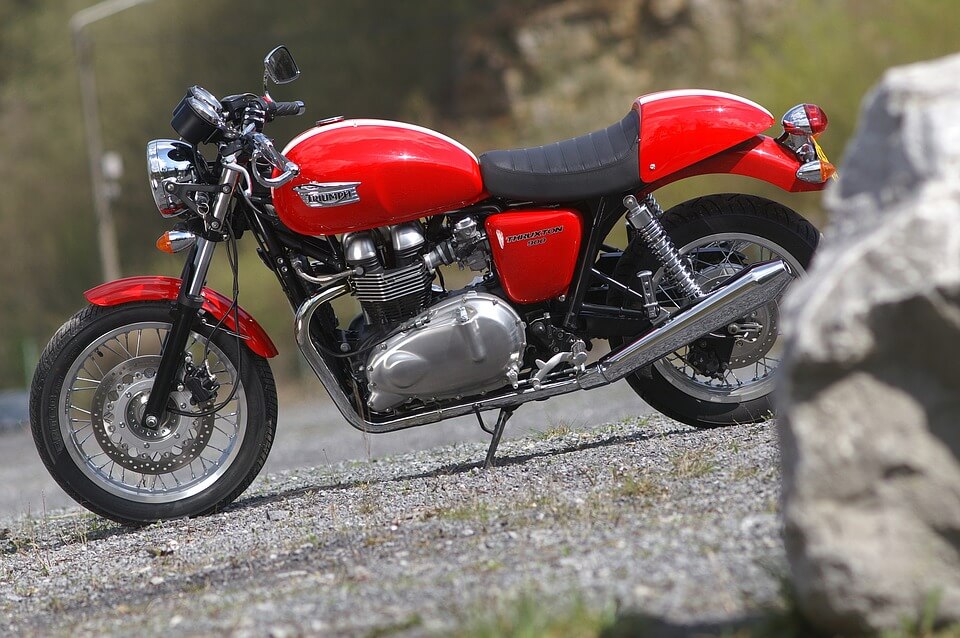Triumph – The Never Ending Battle
Steve McQueen, Clint Eastwood and Elvis Presley made them cool in the fifties and sixties, but after this reigning period Triumph had to fight to avoid the scrapheap.
Triumph Motorcycles is now one of the largest, most iconic British bike manufacturers in the world. There is a remarkable history in the company’s timeline, showing the battle of this legendary brand.
Triumph started life in 1886 as a bicycle business, the Triumph Cycle Company. In 1902 they added an engine and created their first motorcycle. In 1914 World War I worked fairly well for the company as more than 30,000 ‘Trusty Triumph’ bikes were used.
“The Trusty Triumph saved their butts many times” Greg Heichelbech, Triumph North American CEO
The Fame
Triumph then extended into the car market with the purchase of Dawson Car Company in 1921, the business was split into cars and bikes in 1936. Over the next four decades Triumph grew massively in success and popularity, they introduced the parallel-twin platform engine, set a few speed records and became known as an innovator.
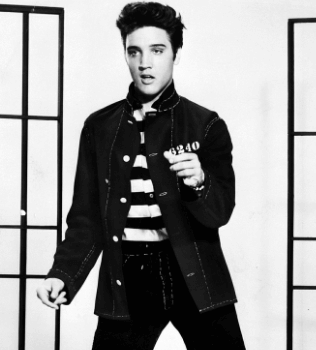
The fact that the Triumph Bonneville T120 was the chosen bike for huge celebrities at the time like Bob Dylan, Elvis Presley and Clint Eastwood only helped the sales. The bike was associated with glamour and excitement, especially when Evil Knievel attempted the longest jump of his career on one. He flew over the fountains at Caesar’s Palace, Las Vegas in 1967.
Many say it was Steve McQueen who really made the Triumph image when seen gunning through the countryside trying to outrun Nazi’s in The Great Escape on his TR6 Trophy. As well as riding them in films McQueen owned dozens of his won, there are many photos from the era of him riding around his Californian home and cruising around the busy streets.
The Triumph motorcycle was the ultimate symbol of cool in this time, it was a sign of freedom and rebellion. Its best year was 1967, they had made 46,500 motorbikes sending 28,500 of them to the USA. Unfortunately, the British brand was about to face some serious competition, leaving the glory days of the fifties and sixties behind. This was due to the introduction of the Honda from Japan.
The Rivals
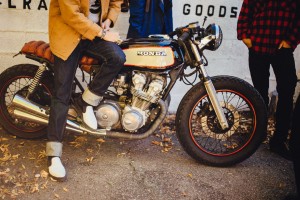
The Japanese had arrived, showing how motorcycles should be made. Triumph’s reign seemed to be coming to an end, instead of developing the bikes the company stuck with what they had. In the early 70’s the parent company BSA dramatically collapsed. In the wake of their failure Norton-Villiers-Triumph was created, they assessed the productivity and decided the Meriden factory had to be closed. Due to poorly handled communications, the factory workers were outraged and locked the doors on their new owners!
They staged an extraordinary 18-month sit-in, and with the backing of the Labour Government, headed by Tony Benn, the Workers Co-Operative was formed. Benn wanted three failing British firms (Scottish Daily News, Kirby Manufacturing, and Meriden Triumph) to go into a merger in a bid to save them. People saw the Workers Cooperative as Benn running a fashionable social experiment. Meriden Triumph was able to buy the factory and market the bikes they produced, but while all this was going on their rivals were on the rise.
The company hobbled on but only got so far, the decline in sales was too great and finally they went into receivership.
The Battle Begins
When all seemed lost, a man called John Bloor came along. Bloor is from Derbyshire, his first job was as a trainee plasterer for a local contractor. Two years later he had set up his own business and had built his first house before he was 20. His company (Bloor Homes) is now one of the biggest privately-owned housebuilders in the UK. In 1983 Bloor was then looking for his next challenge, which he found in Triumph. Bloor bought the Coventry factory and with it the rights to the Triumph name. Instead of smashing the factory down, he decided to retool it.
John Bloor wanted to attempt one of the most daring rebirths in British industrial history.
By this point the Japanese were completely dominating the market, Triumph had to somehow compete against Honda, Suzuki, Yamaha and Kawasaki. Bloor didn’t bulldoze in and start launching bikes straight away, he planned, researched and created new ideas for years. He wanted to find out why and how the Japanese were manufacturing so well, he contracted a small team of engineers to work around him. They even visited Japan to go to the factories and see what was happening behind the scenes, they were allowed inside because no one had any idea of the secret come back that Bloor was planning. They also would never even consider that the British could rival their systems.
Bloor was taking a massive risk, but he was doing the research to make sure the comeback would be a success. When Triumph eventually launched, they did so with not just one bike but a range of six in September 1990 at the Cologne Show (The unfaired Trident 750 and 900 Triples, the touring Trophy 900 Triple and 1200 Four and the sports-oriented Daytona 750 Triple and 1000 Four.). The motorcycle world was in shock.
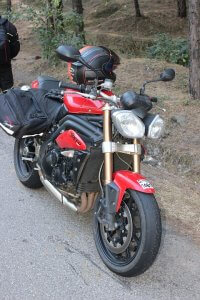
They went on sale in the UK and in Germany, at the new factory, there was 100 staff and just 1,200 motorcycles. The year after 5,000 were built. Numbers were on the increase and in 2000 Triumph once again was catching the attention of celebrities, when Tom Cruise chose to ride a Triumph in Mission Impossible II and also in his personal time. This had a massive impact, the next year Triumph made 31,000 bikes and the company turned its first profit.
Although things were looking better for Triumph, things still weren’t plane sailing. The feedback about the bike was mostly positive, the main grumble was that they were slightly bland.
Research into creating more exciting motorbikes was ongoing, when a disaster struck.
In March 2002 the factory set light, it took over 100 firefighters to get it under control but by that point, the production lines were destroyed. A lot of people thought this would have to be the end of Triumph, but Bloor re built the factory once again and it was about six months before production restarted. This meant Triumph was now at a loss again, it’s said that Bloor has to cover the shortfall of £4.5 million.
After the fire Bloor got back to creating more stimulating bikes, he brought in McKinsey & Co consulting firm to look at the business and see what needed to be changed. They suggested scrapping the four cylinders and concentrating on building unique bikes with charismatic twins and triples, giving the bikes the noise and character it's now famous for. Following this advice the 2,300cc Rocket III was launched, the bike shook the motorcycle world and had an 18 month long waiting list by the time it went on sale in 2004. Triumph had managed to create something new while maintaining their classic British style:
“In design-conscious countries like Japan and Italy they love British design; it's not too fussy, it's understated, it's cool, and we deliberately turn up the Britishness there. But the old British brands went out of business because they didn't pay attention to quality and innovation. We won't make the same mistakes.” Tue Mantoni, former Triumph CEO
For a few years, their strategy was going well, until once again Triumph faced hard times. The recession hit in 2008 and the motorcycle market collapsed.
“Sales of U.S. motorcycles across all brands dropped from 650,000 units to 375,000 units” Greg Heichelbech, Triumph North American CEO
The great business minds of Bloor and Tue Mantoni did see the threat coming and tried to prepare. They cut down production by 10% and created special additions to entice buyers. So although the company wasn’t making the profit they had predicted, the sales remained mostly on the flat while most companies were going bust.
The Triumph brand has made it through receivership, recessions, redesigns and even fire.
In 2014 Triumph Motorcycles announced the highest number of bikes sold since the re-launch 30 years ago, selling 54,432 motorcycles globally. Between January – December 2014 the Great British brand continued to maintain 18.7% of the UK market. They entered 2015 as the top-selling European brand in North America, sales rose 66% in the USA.
Triumph Timeline
1902 The first Triumph is produced! 2.2hp powered engine and is now known as No 1
1914 30,000 of the Type H Trusty bike is chosen for the Allied military service.
1927 The factory in Coventry factory now stands at 500,00 sq ft with 3000 employees.
1936 - 1937 Triumphs car and bike businesses are split. Edward Turner is appointed as chief designer. Edwards unveils the 498 Speed Twin, top speed of 90 mph.
1946 Triumph focuses on three models – Tiger 100, Speed Twin and 349cc 3T.
1954 – 1955 The start of an amazing era of performance machines from Triumph. When they held the motorcycle land speed record for 15 years (apart from a 33 day period). Johnny Allen hit 193 mph on the Bonneville Salt Flats.
1969 – 1970 The Production TT is won on a Bonneville by Malcolm Uphill. Motorbike production peaks at nearly 46,800 units.
1984 John Bloor bought the manufacturing and brand rights to the firm.
1990
The famous relaunch at the Cologne Show in September is headed by Bloor. A range of six motorbikes. Including the unfaired Trident 750, and 900 Triples. The touring Trophy 900 Triple and 1200 Four and the sports-oriented Daytona 750 Triple and 1000 Four.
1996 Triumph releases another hit! The Daytona T595 became the 50,000 motorcycles to be manufactured at Hinckley.
2000
The Bonneville returns to the lineup. The audience for this bike was massive. People loved the modern-day function of the parallel-twin coupled with the retro feel of the bike.
2002 Factory fire – it took over 100 firefighter’s five hours to get under control
2004 The Triumph Rocket III is released. Giving 2,294cc, 140 Cubic Inches and 147ft.lbs torque at 2500rpm. This bike remains the largest production motorcycle in the world.
2007 The Street Triple. It is extremely successful and creates a new segment in the motorbike marketplace.
2008 The Bonneville line up receives fuel injection
2010
The first belt-driven bike, the 1600cc parallel-Twin. This bike brings Triumphs reputation for excellent handling. Engineering to the cruiser market. The US is so impressed with this bike the Cycle World magazine votes it as their Cruiser of the Year.
2011 A massive launch year for Triumph! Tiger 800 & 800XC, Speed Triple, Daytona R, America, Speedmaster and Thunderbird Storm is out.
2012 Triumph hits 110 years of manufacture! The Tiger Explorer is launched making a real scene in the adventure bike sector.
2013 Triumph’s market share in the +500cc reaches 6.2% and they expand into India
2014 The British firm was the top seller of motorcycle +500cc in England. With an 18.7% share of the market and an 8% rise compared to 13.
2015 Triumph announced its financial results ending 30 June 2015. It's a much better figure than the year before despite a slight fall in overall turnover
For now...
Triumph is winning the battle. Overcoming everything thrown at them. They're now producing some of the best sales figures ever recorded. Nothing is ever really secure, but Triumph doesn’t seem to be a brand that will quietly fizzle out. The brand has created a massive following. Bloor believes this is because of the employee’s commitment and passion:
“The success of the brand is, without doubt. Down to the skill and commitment of our team. Who are dedicated to ensuring that every motorcycle that leaves our factories lives up to the Triumph name” John Bloor
Triumph is the oldest continuous production motorcycle company in the world, here’s to 2016 and beyond.
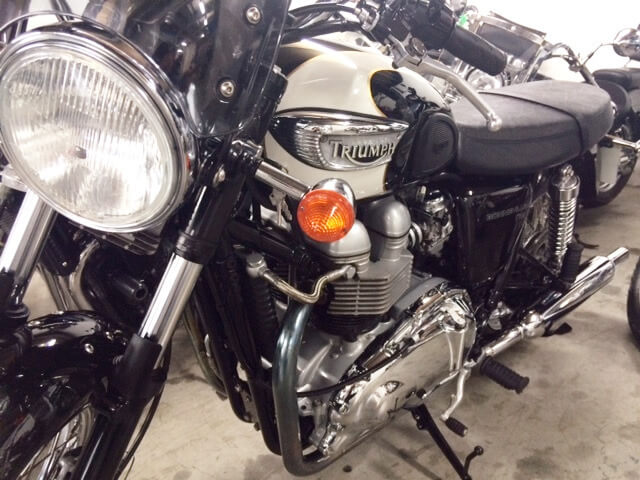
Sell your Triumph? If you would like to value your bike just enter your registration on webuyanybike.com - the known and trusted, UK's leading bike trader!
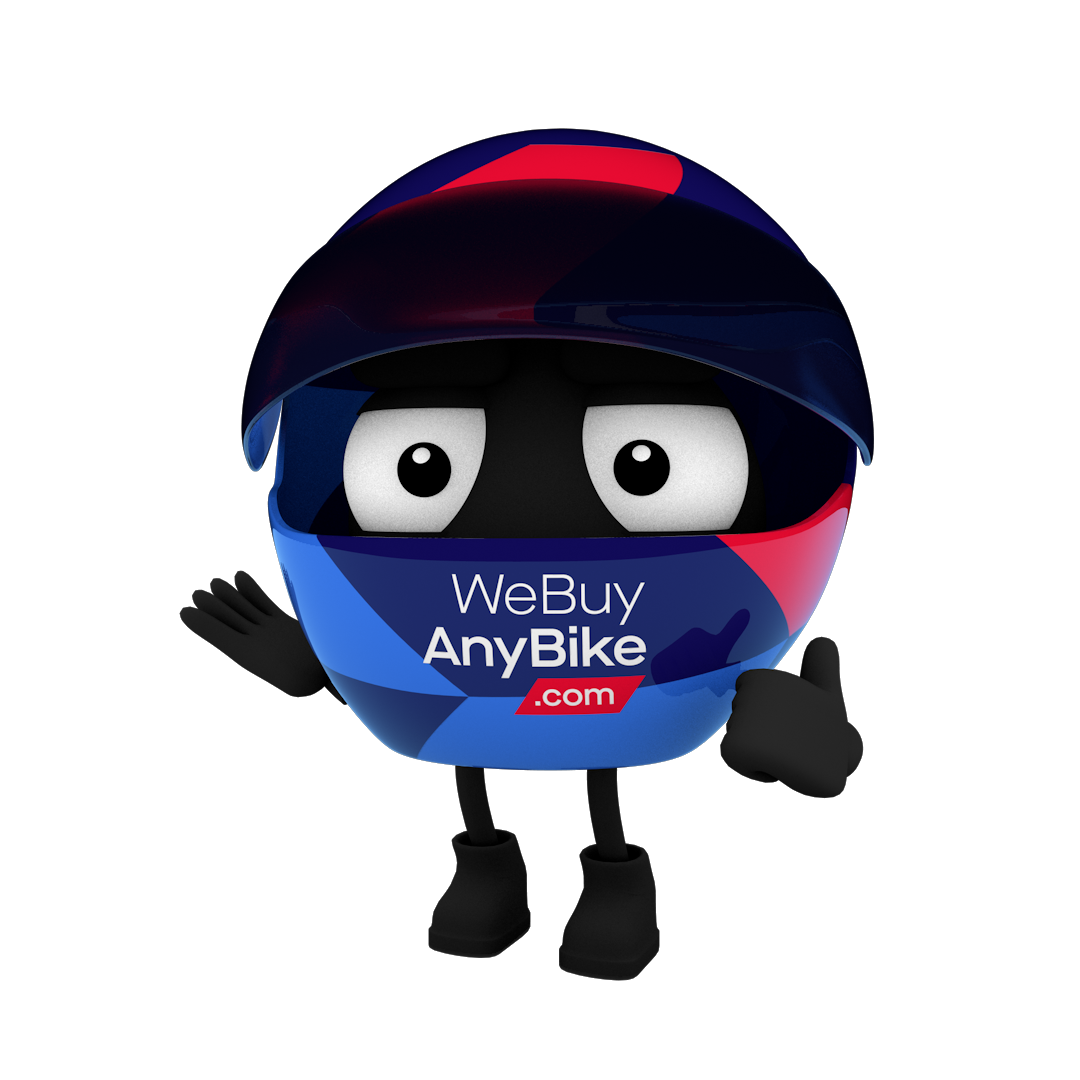
Helmut
8 Apr 2016
For any blog enquiries, please emailmarketing@webuyanybike.comView all posts by Helmut
